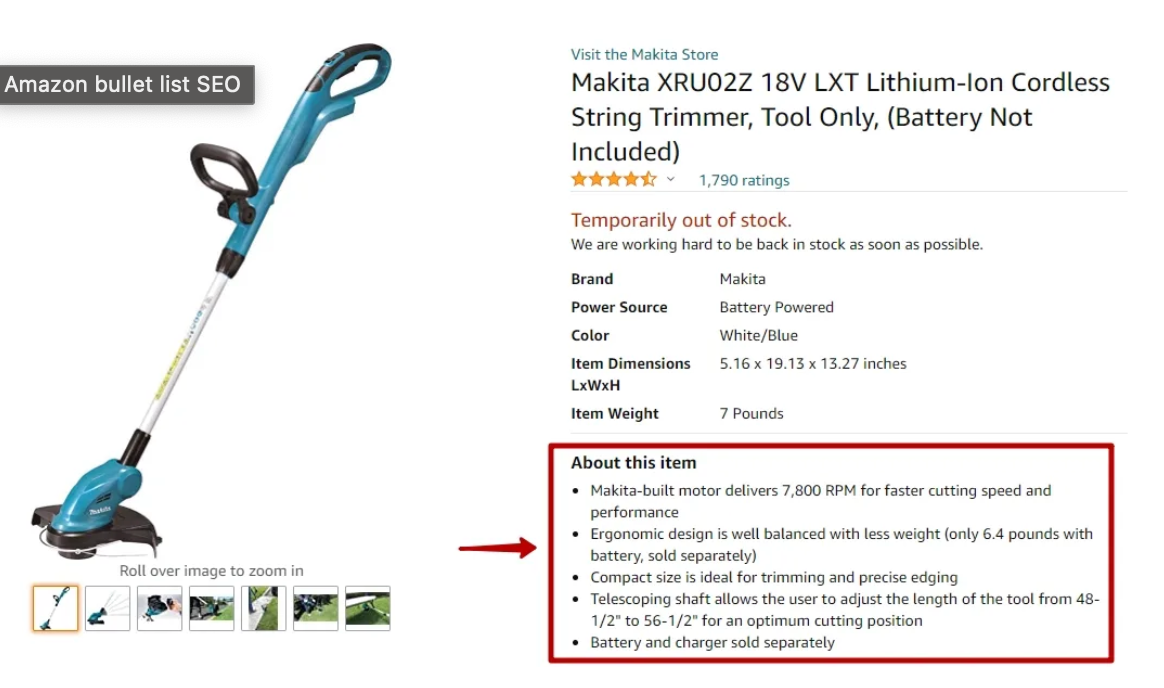How to Rank Higher on Amazon Using AMZScout? (Amazon SEO Tips)
For e-commerce and affiliate marketers, SEO (search engine optimization) is essential. Amazon sellers, too, benefit from optimizing product listings. This guide unveils Amazon SEO insights, and tips on how to rank higher on Amazon with AMZScout keyword ranking, ensuring increased visibility and sales.
Just as SEO enhances Google rankings, it’s necessary for growing on Amazon. From books to merchandise, mastering Amazon SEO is non-negotiable for success. This concise guide delves into white hat techniques to move your products to the top, providing a roadmap for higher rankings and increased profitability on the Amazon platform.
Understanding Amazon SEO
Amazon SEO, or search engine optimization, centers around optimizing product listings to enhance visibility in Amazon search results for specific keywords. The core objective is to secure higher rankings, ensuring that your products surface prominently when potential buyers search for relevant terms.
For example, imagine selling soft toys. With effective Amazon SEO, your goal is to consistently appear in search results for terms like “cheap soft toys,” “best soft toys”, etc. driving increased product sales. Essentially, Amazon SEO mirrors traditional SEO practices, but the focus shifts from Google’s search engine to Amazon’s platform, catering to the unique algorithms of the e-commerce giant.
While both Amazon and Google rely on keywords, their objectives diverge significantly. Google’s goal primarily focuses on providing information and answering queries, ranking pages based on user engagement and helpfulness. Whereas, Amazon’s goal centers around showcasing products for purchase. Pages are ranked based on their potential to convert searches into transactions.
What is Amazon’s A9 Algorithm?
Amazon’s algorithm, commonly referred to as “A9” informally, arranges product rankings through intricate considerations. The key factors influencing the algorithm’s decision-making can help sellers with strategies to win an advantageous position on the platform. Here is how it defines keyword rankings.
- Keyword Relevance: A critical aspect is the seamless integration of keywords in your listing. The algorithm aims to establish a connection between a buyer’s search query and the content in your listing.
- Seller Authority & Fulfillment Method: Metrics such as feedback ratings and performance significantly impact your product’s Amazon ranking. Opting for fast and reliable FBA (Fulfillment by Amazon) enhances rankings, leveraging Amazon’s promotion of its services and reducing the likelihood of negative reviews due to slow deliveries.
- Sales Performance: The historical performance of a product, encompassing units sold and revenue generated, wields considerable influence over rankings. A robust sales history positions products favorably in search results, increasing visibility.
- Click-Through Rate (CTR) & Conversion Rate: A higher CTR indicates user interest, signaling to Amazon that the product is appealing. Simultaneously, a strong conversion rate, reflecting completed sales, further elevates the product’s standing in search results.
- Positive Reviews: The number of positive reviews directly impacts the algorithm’s evaluation, emphasizing the significance of customer feedback in achieving higher rankings.
Understanding and optimizing these factors becomes the cornerstone for enhanced visibility, credibility, and overall success on Amazon. Sellers can incorporate these insights into their listing strategies, stay informed about algorithm updates, and maintain a competitive edge in the Amazon marketplace.
How to Rank Higher on Amazon with AMZScout?
By following these steps on AMZScout, you can strategically optimize your Amazon page, improving its visibility and ranking on the platform. Keep in touch with the changing trends and consistently refine your approach to stay competitive.
Do Keyword Research

- Utilize Amazon’s search field for initial insights by typing in your product. This reveals popular search terms.
- To enhance your keyword arsenal, leverage the AMZScout keyword research tool. We wrote a detailed guide on how to use AMZScout to research Amazon search terms that can help you through.
- Create a Keyword Group in the Listing Builder, saving related keywords and analyzing search volume.
Incorporate Keywords Into Your Product Listing
- Access AMZScout’s Listing Builder and navigate to the Keyword Group section.
- Save collected keywords or extract lists from competitors using their ASINs.
- Click “Create Listing” to proceed.
Include Keywords Strategically

Craft a compelling title with the primary keyword. Integrate additional relevant keywords without surpassing 200 characters.
Reinforce the primary keyword in the features section. Include other target keywords for a comprehensive approach.
Infuse keywords organically into the description where relevant. Maintain a balance for readability and user engagement.
Monitor & Maintain Relevance
Use AMZScout’s Listing Builder to track up to 100 listings and monitor high-demand keywords.
Diversify keywords throughout the content for a natural flow, avoiding repetition.
Be mindful of search volume trends to ensure ongoing relevance.
Beware of Keyword Density
Unlike Google, Amazon doesn’t heavily prioritize keyword density. Opt for a varied use of keywords instead of repetition.
Avoid excessive keyword usage, as the algorithm penalizes overused keywords. Strive for a balance that enhances readability and customer experience.
Tips for Crafting Compelling Content on Your Amazon Product Page

- Present your product in the best light with clear, high-resolution images showcasing various angles and key features. Quality visuals enhance customer confidence and understanding.
- Emphasize how each product feature benefits the customer. For instance, if your product is lightweight, highlight how it reduces fatigue during use. Connect features to practical advantages for a customer-centric approach.
- Leverage the product description section to provide an in-depth narrative about your product. Expand on features, elucidate functionalities, and illustrate how these aspects directly cater to the customer’s needs. A thorough product description positively impacts the conversion rate.
- For branded products, capitalize on features like Enhanced Brand Content or A+ Content. These tools allow you to customize your product listing, creating more captivating content that contributes to increased sales. Utilize this opportunity to tell a compelling brand story and further engage potential customers.
- Remember, your audience extends beyond the algorithm to include potential customers. Craft well-thought-out listings that effectively highlight your product’s best features. Ensure the content is informative, engaging, and tailored to meet the needs of your target audience.
By implementing these tips, you not only enhance your product’s visibility through Amazon SEO but also create a compelling narrative that resonates with customers, ultimately driving higher.
Keep Tracking Keywords to Maintain Rankings
AMZScout offers a Keyword Tracker as part of its suite of tools designed to assist Amazon sellers in optimizing their product listings and improving their performance on the platform. Explore other features of this fantastic tool in our detailed AMZScout review.
- Keyword Ranking Monitoring: You can track the ranking positions of a product for specific keywords on Amazon’s search results pages over time. This feature helps sellers gauge the effectiveness of their keyword optimization efforts.
- Competitor Analysis: You can grab insights into how competitors are performing for selected keywords. Sellers can analyze competitor rankings to adjust their strategies and stay competitive in the marketplace.
- Search Volume Data: Get information on the search volume for particular keywords. This data helps sellers identify high-demand keywords relevant to their products.
- Historical Data: View historical keyword performance data. Sellers can analyze trends and identify patterns, aiding in strategic decision-making.
- Performance Analytics: Get detailed analytics on how adjustments to keyword strategies impact product visibility and sales. This data can be crucial for refining and optimizing future campaigns.
FAQs
What is Amazon SEO, and why is it important?
Amazon SEO involves optimizing product listings to improve their visibility and ranking on Amazon’s search results. It’s crucial for increasing product visibility, driving traffic, and ultimately boosting sales.
How can I use AMZScout for keyword research?
AMZScout provides valuable insights into popular keywords and search terms used by Amazon shoppers. By conducting keyword research using AMZScout, sellers can identify relevant keywords with high search volume and optimize their product listings accordingly.
How does AMZScout help in improving Amazon rankings?
AMZScout provides valuable data and insights to optimize product listings, keywords, and overall strategy. It helps identify high-performing keywords, track competitors, and analyze market trends, empowering sellers to make data-driven decisions to improve their Amazon rankings.
What are the key factors that influence Amazon’s rankings?
Amazon rankings are influenced by various factors, including product relevancy, sales velocity, customer reviews, and keyword optimization. Understanding and optimizing these factors can significantly improve your product’s ranking on Amazon.
Does AMZScout provide insights into competitor strategies?
Yes, AMZScout offers competitor analysis tools that allow sellers to track competitors’ products, pricing, and keywords. By analyzing competitor data, sellers can identify gaps in the market, adjust their strategy, and improve their chances of ranking higher on Amazon.
Can AMZScout help with product listing optimization beyond keywords?
Yes, AMZScout provides insights into various aspects of product listing optimization, including images, pricing, and product descriptions. Sellers can utilize these insights to create compelling listings that resonate with customers and improve their chances of ranking higher on Amazon.
What strategies can I implement to improve my product’s relevancy on Amazon?
To improve relevancy, focus on optimizing your product title, bullet points, and product description with relevant keywords. Additionally, ensure that your product images are high-quality and accurately represent your product.

Leave a Reply